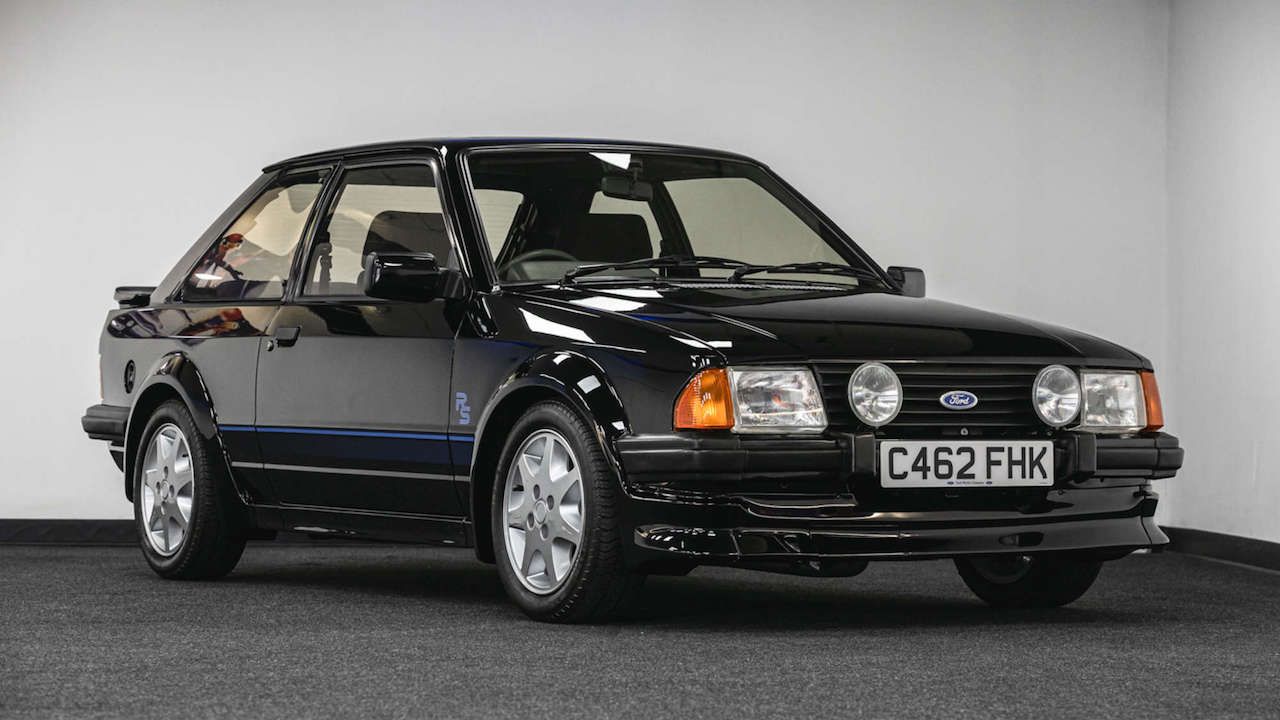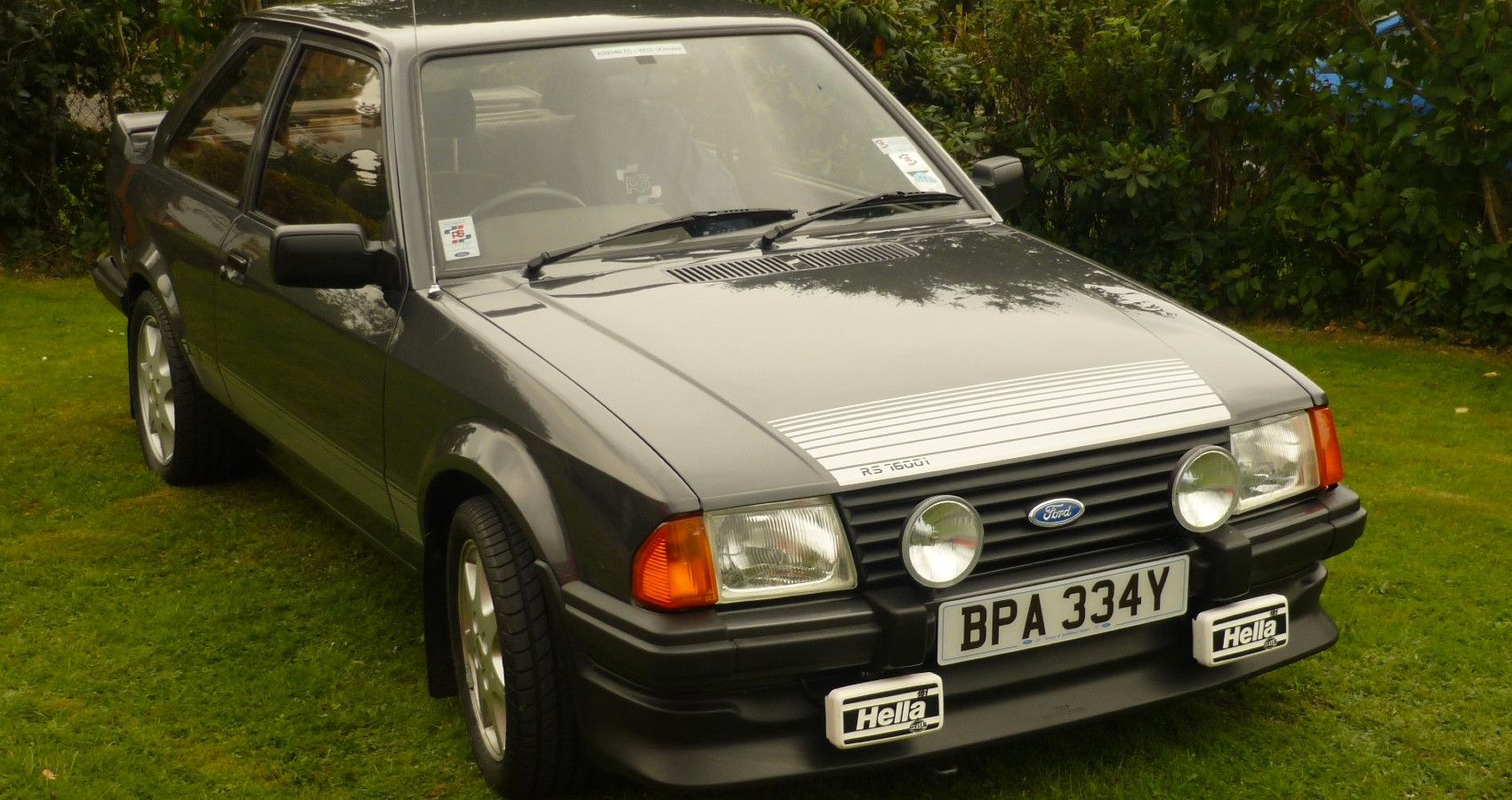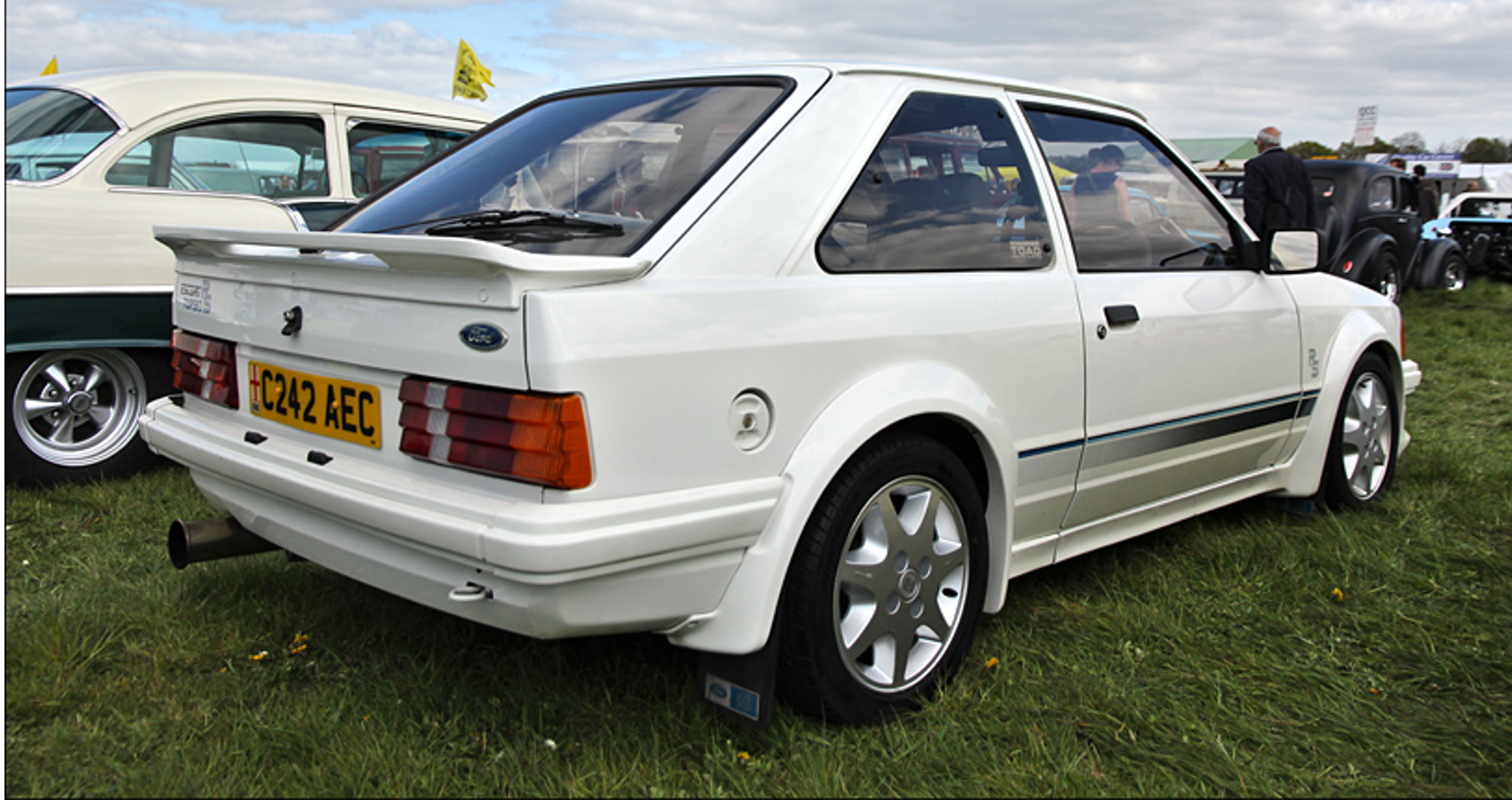When it comes to Ford, many hugely successful cars spring to mind. One is the highly popular and durable Ford Escort, which was in production for a whopping 36 years, from 1968 until 2004. The Ford Escort was a family-friendly motor, albeit a small family car. With six generations of Escorts being released over its 36-year life span, it's time to check out the third-generation model – Escort MK3 that was very popular across the pond in the UK.
Because there are so many variants when it comes to the Ford Escort, unfortunately, not all of them can be mentioned. But let's start off at the bog-standard base Ford Escort MK3 and move onto arguably the best Escort ever built in the form of the RS Turbo. So, the base Escort MK3 was very popular and moderately cheap. It was very basic and came with a 1.3-liter CVH engine, which was connected to a four-speed manual transmission. The appearance of the Ford Escort MK3 base version was appealing, and pretty good-looking, but nothing spectacular. While the base MK3 would drive you from place to place and provide you with a strong, durable, and reliable car, it never provided you with the extra thrills and excitement that the RS Turbo did. So lets move onto the good bit…
Here's What Went Wrong With The RS1600i
Towards the end of the 1970s, sales of the previous MK2 Escort started dwindling, and it began to show its age. It was at this point that Ford developed the Escort MK3, which was put on sale in September 1980 and became extremely popular extremely quickly. Unlike the rear-wheel drive system found on the MK2, the MK3 had a front-wheel drive system with a fully independent suspension fitted all around.
What really got people talking about the Ford Escort, and what got people so excited about the Ford Escort, was the Group A homologation MK3 in the form of the RS1600i. Bred for Ford's hunger for motorsport, this hardcore version of the MK3 received many upgrades specifically designed for racing. This included a revised aerodynamic package, an uprated suspension, and a highly tuned engine. Although the MK3 RS1600i proved so successful in the fact that Ford sold 50% more than what they needed to be accepted into Group A, it was a flop and won very little.
Was The MK3 RS Turbo The Best Of The Best?
This is when Ford decided to upgrade the MK3 yet again. They developed the RS Turbo swiftly, and with added power it was able to output 132 hp and 133 lb-ft of torque rather than the RS1600i’s poor 115 hp and 106 lb-ft of torque output. Ford hoped that the RS Turbo would be impressive enough to compete in both circuit racing and rally racing. But as the RS Turbo was also a Group A homologation, it meant that 5000 production cars had to be built within a year. Because of this and many other delays, the RS Turbo was eventually launched in October 1984, and finally went on sale in early 1985.
Coming as standard in the RS Turbo was an advanced viscous-coupling limited-slip differential, as well as being the first ever small Ford to be fitted with a turbocharger. The Ford Escort MK3 RS Turbo housed a 1.6-liter CVH, water-cooled, naturally aspirated, inline four engine with wet-sump lubrication, a single overhead camshaft and two valves per cylinder. Which, of course, was arranged transversely. This rather impressive 1980s engine was paired up with a 5-speed manual transmission, while the electronic ignition paired up with the turbocharger, the intercooler, and the Bosch KE Jetronic fuel-injector to output as many horses as possible.
Just like the RS1600i, the RS Turbo’s chassis was established upon the standard MK3’s body shell. While the majority of the car was built using steel body panels, some glass fiber was used to add that element of racing. The suspension used on the RS Turbo was pretty much identical to the already uprated RS1600i suspension. But unlike the RS1600i, the RS Turbo came with anti-roll bars both in the front and the rear. To aid the RS Turbo in races, longitudinal tie bars, transverse arms with reinforced rubber, and separate coil-sprung dampers were added to the back end of the vehicle. At the front end of the vehicle, the RS Turbo featured an aluminum crossmember, TCA tie rods, and MacPherson struts. Although speed is key when it comes to rallying and racing, stopping is also fairly important, which is why the Ford Escort MK3 RS Turbo was fitted with the same 240mm ventilated front brake discs as the RS1600i, while the rear drums increased in size from 180mm to 203mm.
It's easy to see why the Ford Escort was one of Ford's best-selling cars in Europe; its appearance was eye-catching, while its build was dependable and trustworthy. They provided you with a fantastic family car that could quickly turn into an absolute beast of a car that could entertain you for hours. With the Ford Escort MK3 RS Turbo's fairly advanced set up, for the time anyway, it was able to reach speeds of a respectable 132 mph. While it could manage a straight 0-60 mph in 7.8 seconds. Of course providing its driver with insane amounts of fun!
Source: Ford



